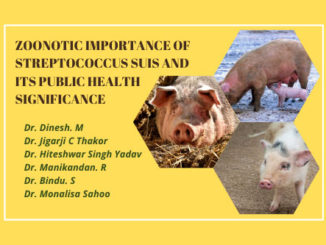Introduction
Penile muscle injury is a commonest penile lesion/condition occurs as result of bite wound, accident during mating, blunt and penetrating trauma. Hemorrhage is the most frequently occurring clinical sign due to rupture of blood vessels of the tunica albuginea. If there is persistent hemorrhage from deep wound, suture repair of the tunica albuginea of penile mucosa is needed. A case of penile injury and it’s surgical management in non descript dog is reported.

Case history and Observation
Two year old non-descript male dog referred with history of bleeding from the penile region since morning and the history revealed that dog was bitten by someone while dog is in lock with female during mating process. Clinical examination revealed that rupture of penis muscle around 6cm in length with profuse bleeding from the injured part. However, there was no injury to penile urethra and it was intact.

Treatment and Discussion
The dog was stabilized with intravenous fluids and it was premedicated with Inj. Atropine sulfate (0.04 mg/kg BW I/M). The general anesthesia was induced with Inj. Xylazine Hydrochloride (1 mg/kg BW I/M). The injured part was cleaned with normal saline, debris and blood clots were removed. Then the suture was carried out with end to end anastomosis of ruptured corpous covernosum muscle and tunica albuginea using continuous lockstitch suture separately with absorbable suture material (catgut NaO). The dog was treated with Inj. Cefrtiaxone @ 25 mg/kg BW I/M, Inj. Meloxicam @ 0.02 mg/kg BW I/M, Inj. Chlorphenoremine maleate 2ml I/M and application of oint. Pendistrin locally. The treatment was followed for seven days. The dog was recovered uneventually.

Penile structure , penile amputation , penetrating penile injuries and penile soft tissue injuries which are considered to be urologic emergencies and typically required surgical intervention.

The goal of treatment for penile trauma is universal and is preservation of penile length, erectile function and maintenance of ability to avoid while standing (Slatter, 1993 and Budras, 2007). Common clinical feature in penile injury include sudden bleeding, pain, deviation, hematoma and some time there may be scortal and perineal hematoma. Associated injuries include urethral rupture and predisposing factor includes excessive force at coitus or manipulation , coital injury , fibrosclerosis of tunica albuginea and chronic urethritis . Most author advocated early surgical repair using absorbable sutures. Complications of injury include coital difficulty, urethral fistula, penile plaque and erectile dysfunction. Current management favours early surgical exploration to prevent complications (Eke, 2002). Conservative management carries high risk of penile curvature and painful erection, therefore surgery should be performed within a few hours following trauma.
Conclusion
Trauma to penis and surrounding tissue is common injury and needs prompt surgical management. If you find your pet tied to female , do not pull them apart or do not bit them to separate which may leads to serious penile trauma. Neuturing of males usually reduces their desire to become involved in animal fight, in addition also reduces desire to mate.
Reference
- Rangasamy, T. Sarath , T. Sathiamoorthy and K. Kulasekar [2013] Rupture of penis muscle and it’s management in German Shepherd dog.
- K. Nandi et al [2014] A textbook on Veterinary Surgery and Radiology.
|
The content of the articles are accurate and true to the best of the author’s knowledge. It is not meant to substitute for diagnosis, prognosis, treatment, prescription, or formal and individualized advice from a veterinary medical professional. Animals exhibiting signs and symptoms of distress should be seen by a veterinarian immediately. |







Nice work n information
Nice information sir, it is helpful for me in field level
One of Best written article…needs to spread such information to common man….. humanity touch to it…..